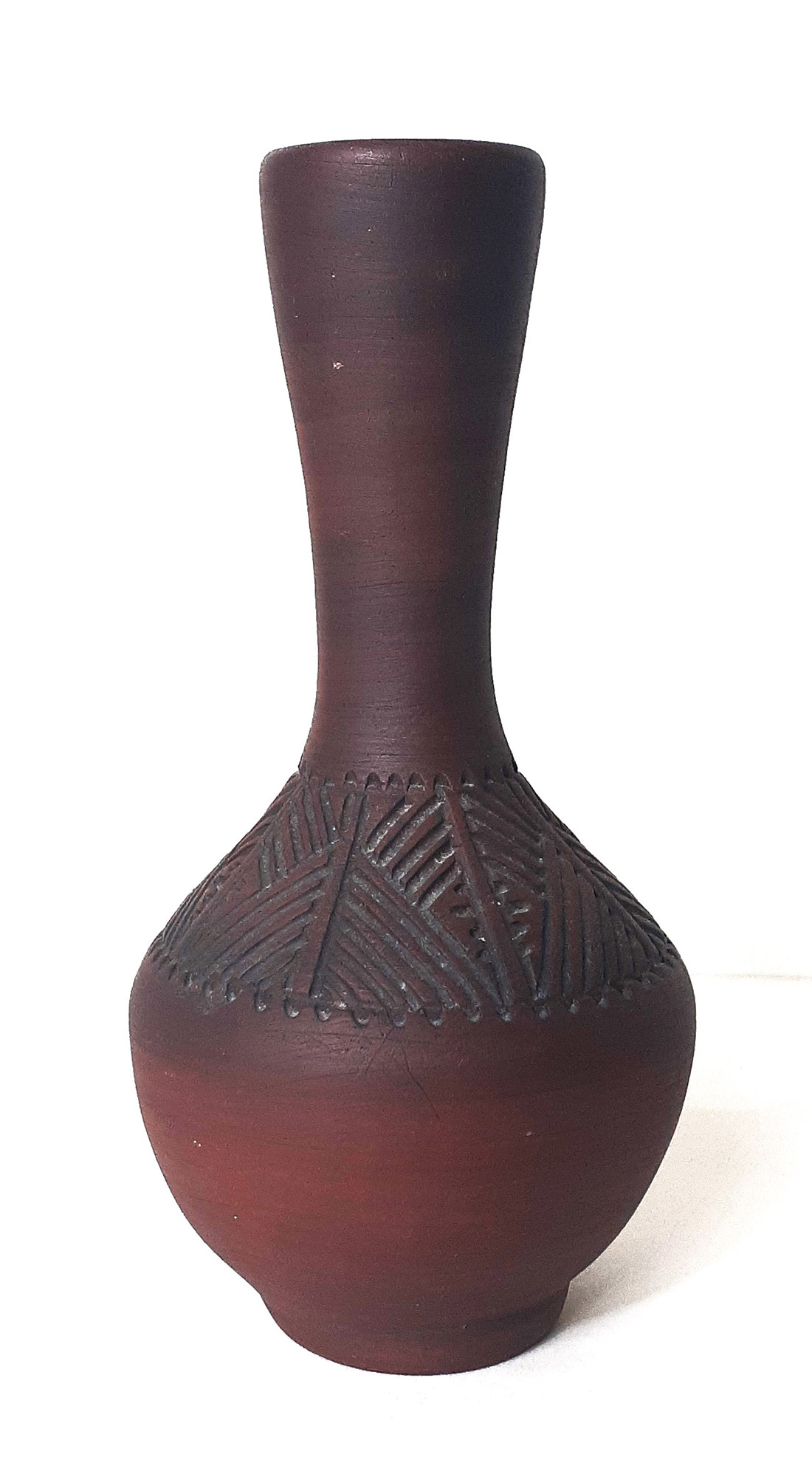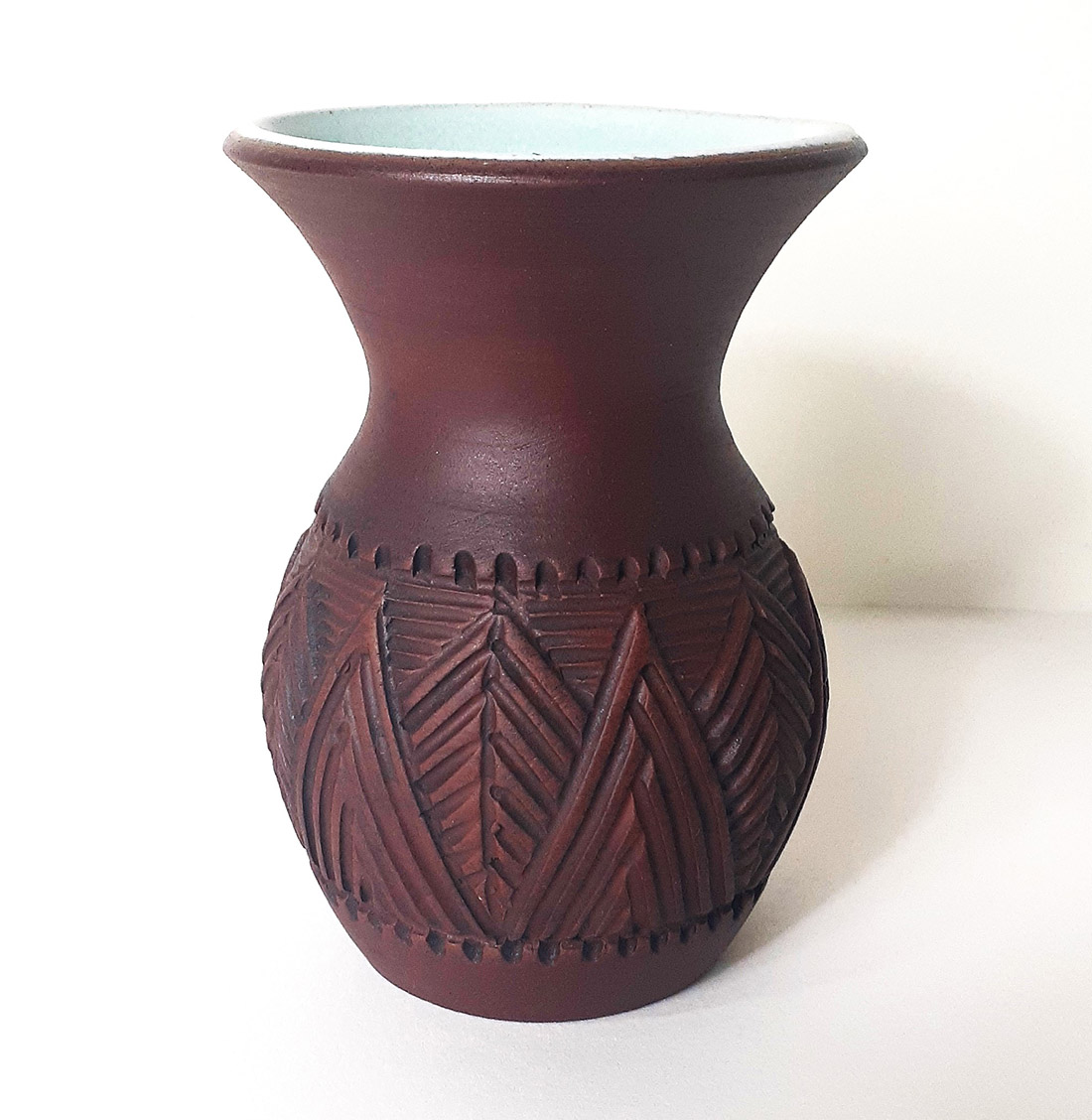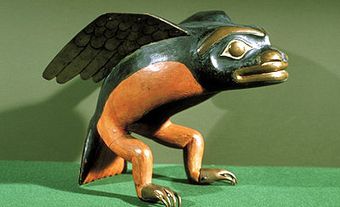Six Nations of the Grand River in Southern Ontario is the largest reserve community by population in Canada. It is the location for one of Canada’s largest cultural revitalization movements. During the mid-20th century, artist Elda “Bun” Smith began collecting pottery shards that she found throughout Six Nations. With the assistance of potter Tessa Kidick, Smith and other local potters helped to revitalise pottery on Six Nations. They influenced future generations of artists. Six Nations pottery is now one of the most collected ceramics in Canada. It features in gallery and museum collections around the world.
Pre-Contact Pottery
Archaeologists propose that the integration of pottery with vernacular life developed at the end of the Archaic Period and beginning of the Early Woodland Period, approximately 1050–450 BCE. What influenced hunter-gatherer societies to aestheticize their pottery remains largely unknown. However, it is known that pottery was used for pragmatic reasons. Namely, pottery was used for cooking, transporting goods, storage and ceremony. At this time, pottery was created solely by women. They developed stylistic patterns and designs based on tribal identity, social networks and personal choice. Clay was gathered in baskets from a variety of sources, such as next to river beds and streams or in veins in the earth. It was rinsed to remove unwanted debris. After this, sand or crushed shell was added to the clay as a binding agent. Repeated crushing and pressing of the clay helped remove air bubbles from it. These air bubbles could potentially explode the pot during the firing process. Pottery from this early period included rounded bottoms. This ensured food would be evenly cooked when hung over a fire or placed on hot coals. Most pots also included thickened lips or patterned collars. These were incised with patterns on the collar using bone or wood tools. Later, particular aesthetic designs were incorporated into pots. These included animal, human or spiritual effigies and figures.
European Colonialism
During the early colonial period, tin, iron and copper replaced clay. They were used in forming pots, bowls and other practical implements. As a result, the Haudenosaunee pottery tradition declined. Eventually, it fell into total loss. Later, other Haudenosaunee cultural traditions were outright rejected by the Canadian government. In Brantford, Ontario (located adjacent to Six Nations of the Grand River), the Mohawk Institute Residential School enforced further degradation of cultural knowledge. Residential schools are now defined as cultural genocide (see Genocide and Indigenous Peoples in Canada). Today, however, Six Nations pottery remains one of the greatest examples of cultural revitalization among Indigenous communities in Canada.
Elda “Bun” Smith

Elda “Bun” Smith is one of the most important and influential potters from Canada. During the mid-20th century, Smith began to collect pottery shards on Six Nations. Pottery shards were commonplace on Six Nations land and were encountered frequently. However, it was Smith who recognized their cultural value and significance. She began to research the shards through books, periodicals and consultation with other Six Nations members. Accomplished potter Tessa Kidick taught pottery at the Mohawk College of Applied Arts and Technology in Hamilton, Ontario. In 1962, she was commissioned by the Ontario Arts Council to deliver pottery workshops. She taught pottery to Six Nations community members, including Elda “Bun” Smith. As a result of her assistance, the Mohawk Pottery studio was founded by Smith and fellow collaborators Oliver Smith, Darlene Smith, Sylvia Smith, Dee Martin and Karen Williams. This first generation of Six Nations potters created pots in the historical style. They used ancient techniques and clay extracted from the earth. In 1967, during Expo 67 in Montreal, Elda “Bun” Smith gifted Queen Elizabeth II a ceramic tea set. It included wampum-bead design elements. In the context of the controversy surrounding the Expo 67 Indians of Canada Pavilion, Smith’s gesture can be perceived as a symbolic act of resilience.
Contemporary Pottery
Several pottery studios currently exist on the Six Nations community. They are a result of the efforts of Elda “Bun” Smith and the Mohawk Pottery studio members. For instance, Elda and Oliver Smith passed down their knowledge to their son Steve. He started making pottery at 12 years of age. Steve Smith broke away from the historical tradition. He incorporates studio clay, vibrant colour palettes, dynamic compositions, tribal stories and animated iconography into his work. Like his mother before him, he is now recognized as one of Canada’s most important potters. Steve Smith and his wife, Leigh Smith, operate Talking Earth Pottery studio. They work along with their daughter Santee and granddaughter Semiah. Recently, Santee Smith was commissioned by the Gardiner Museum in Toronto, Ontario. She was commissioned to produce large ceramic pots based on four-cornered Rotinohnsyonni vessels.

Second generation potter Cindy Henhawk was taught ceramics by her mother, Darlene, sister of Elda “Bun” Smith. The Henhawk family founded Santhony Pottery studio on Six Nations. It is well-known for maintaining the design, patterns and iconography of historical Kanyen’kehà:ka (Mohawk) pottery. Several other family-run operations and studios operated on Six Nations using the old ways. Notable among these studios are Flint & Feather, the Hill family, and brothers Don and Ron Monture.

Six Nations pottery is now one of the most collectable and sought after art objects from Canada. Their work resides in the collections of the Canadian Museum of History, the National Museum of the American Indian (US) and many others. Its successes are not only felt through individuals and groups in Six Nations. This success is felt throughout the province of Ontario as well as in other Indigenous communities across North America. Through the efforts of the Six Nations potters, other First Nations communities have found inspiration. In particular, the Oneida and Potawatomi have benefitted from these efforts. They have sought guidance in their own endeavours to reclaim previously lost pottery customs.

 Share on Facebook
Share on Facebook Share on X
Share on X Share by Email
Share by Email Share on Google Classroom
Share on Google Classroom


